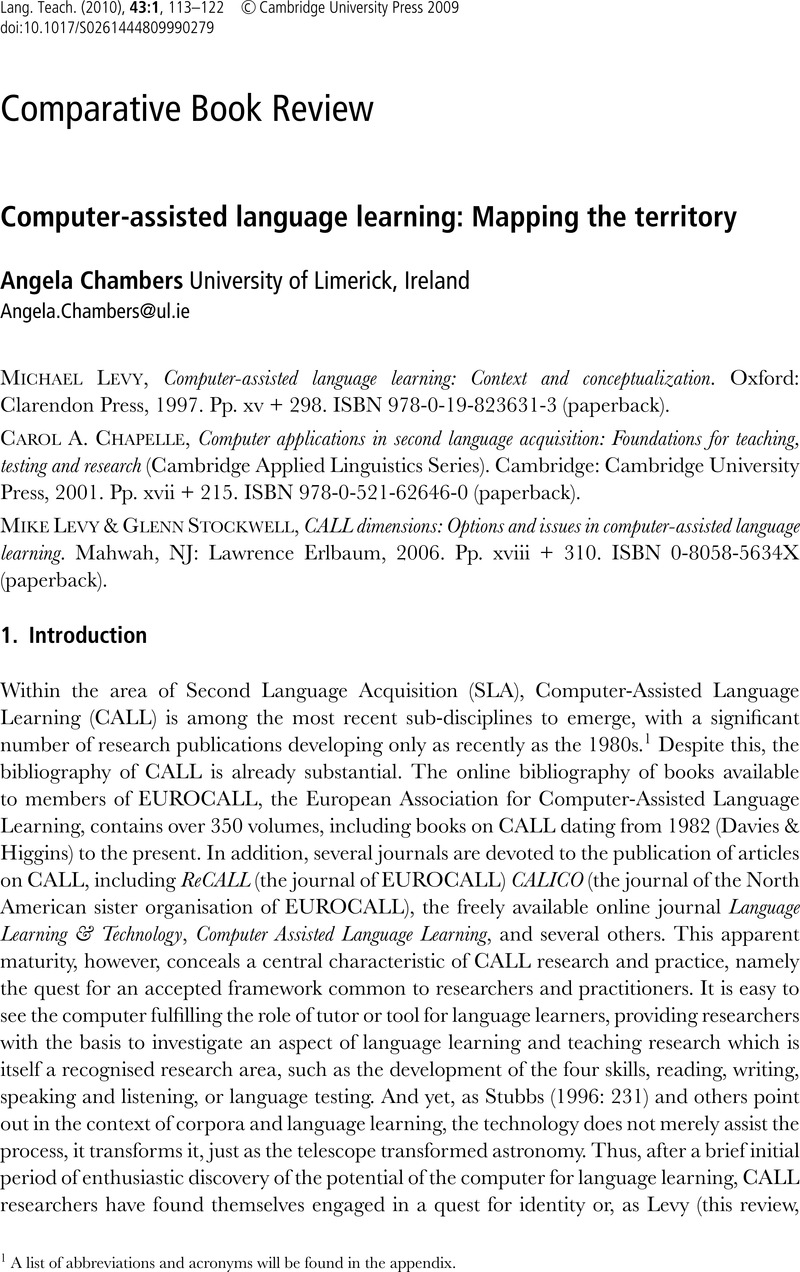Crossref Citations
This article has been cited by the following publications. This list is generated based on data provided by Crossref.
Chuah, Kee Man
2013.
Aplikasi media sosial dalam pembelajaran Bahasa Inggeris: Persepsi pelajar universiti.
Issues in Language Studies,
Vol. 2,
Issue. 1,
Hirata, Yoko
Hirata, Yoshihiro
and
Thompson, Paul
2013.
Knowledge Sharing through Technology.
Vol. 407,
Issue. ,
p.
1.
NOROOZI, Ahmad
REZVANI, Ehsan
and
AMERI-GOLESTAN, Ahmad
2020.
THE EFFECT OF FLIPPED CLASSROOMS ON L2 LEARNERS’ DEVELOPMENT AND RETENTION OF GRAMMATICAL KNOWLEDGE.
Turkish Online Journal of Distance Education,
p.
14.



